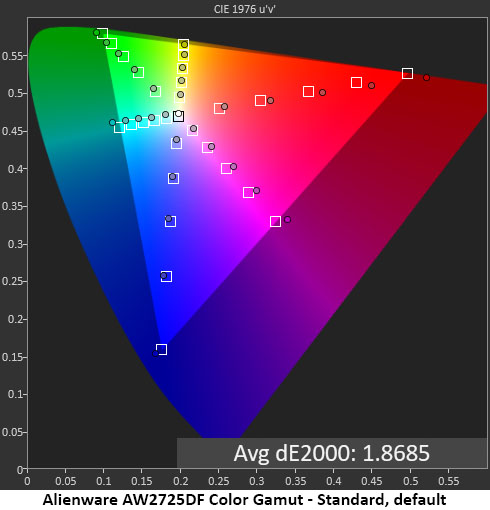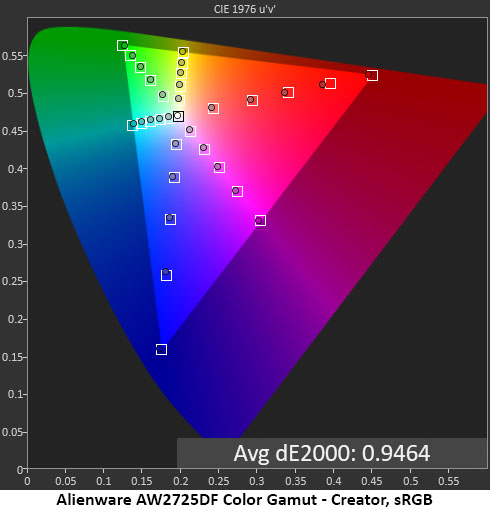Why you can trust Tom’s HardwareOur expert reviewers spend hours testing and comparing products and services so you can choose the best for you.Find out more about how we test.
Grayscale, Gamma and Color
I have found most OLEDs to be more color-accurate than their LCD counterparts. This is as much a product of their status as premium displays as it is a feature of the technology. The AW2725DF fits into this category with a factory-certified calibration for both full gamut and sRGB color.
Grayscale and Gamma Tracking
Our grayscale and gamma tests use Calman calibration software fromPortrait Displays. We describe our grayscale and gamma tests in detailhere.
With no visible grayscale errors, the AW2725DF is well within the boundaries of calibration-not-required in its default Standard picture mode. Gamma tracking has minor anomalies at 10-20% and 90%, where the values are slightly light in tone. Thanks to the panel’s high contrast, this is hard to spot in content.
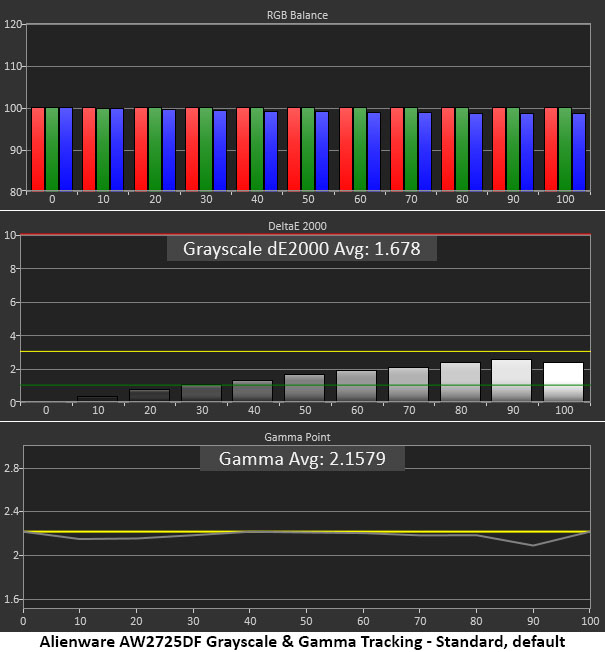
I availed myself since the option to calibrate is present in the Custom Color mode. The gain is certainly visible on the chart, but content and test patterns look the same to the naked eye. You can see a nice improvement in gamma tracking with the previous errors now removed. This is pro-level performance.
The sRGB option in Creator mode has visually perfect grayscale tracking but gamma errors at 10 and 90% brightness. This makes some highlight and shadow details look a little flat, but it is a minor issue.
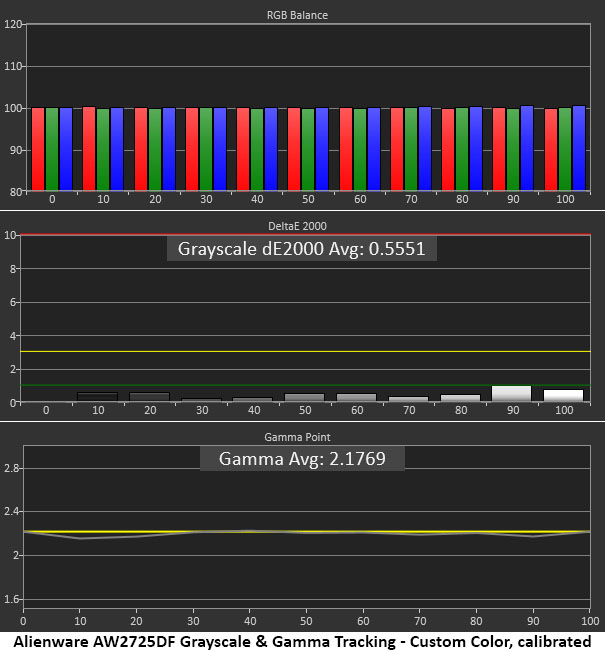
Comparisons
By the numbers, the AW2725DF’s grayscale tracking improves by almost 200% with calibration. Since those values indicate visual perfection, the actual result is insignificant. It looks great and easily meets the standard with or without adjustment. This is how it should be for any premium screen. The AW2725DF fulfills that promise with ease.
Calibration does improve gamma enough to make a tiny visible difference. Tracking becomes tighter thanks to eliminating errors at 10 and 90% brightness, the sweet spots for shadow and highlight detail. It is therefore worth doing. The top three screens all have the same deviation of 0.91%, which equates to a gamma value of 2.18.
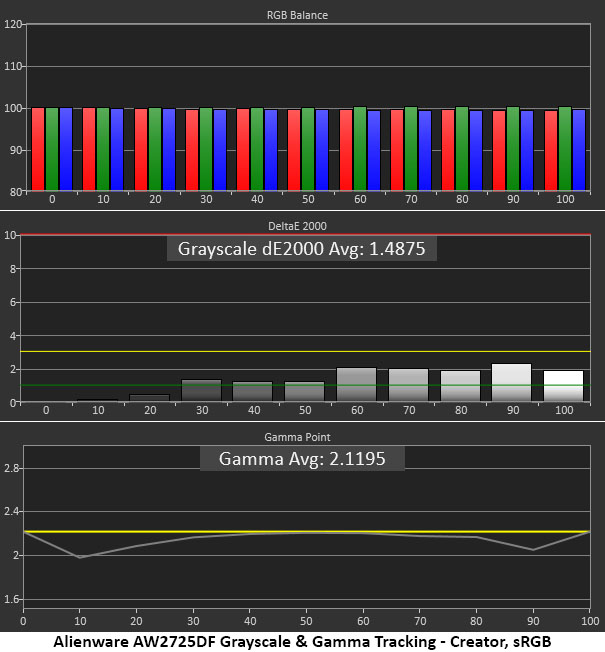
Color Gamut Accuracy
Our color gamut and volume testing usePortrait Displays’Calman software. For details on our color gamut testing and volume calculations,click here.
Not only is the AW2725DF very color accurate, but its gamut is also very large. You can see the extra saturation in green and red. Blue is right on point. Only some tiny hue errors in cyan and magenta would inspire me to tweak.
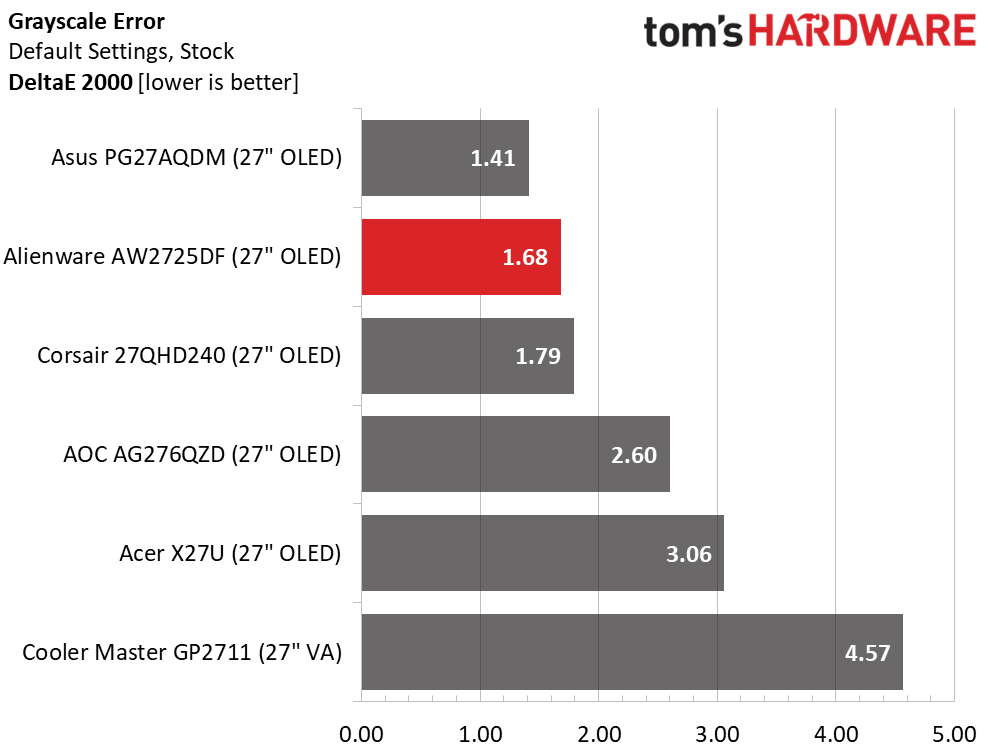
The grayscale calibration I performed in Custom Color mode tightens up those secondaries for a minuscule improvement. This is more about ego than anything else. Ultimately, you’ll be hard-pressed to see any change.
The sRGB option in Creator mode is right on target. There’s a small amount of under-saturation in red, but not enough that you’ll see it. This option is ideal for photographers and graphics pros who need a smaller gamut. I didn’t show it here, but the DCI-P3 option conforms to the cinema standard, which has a 6000K white point, 2.60 gamma, and different saturation targets. It is also accurate enough for professional use.
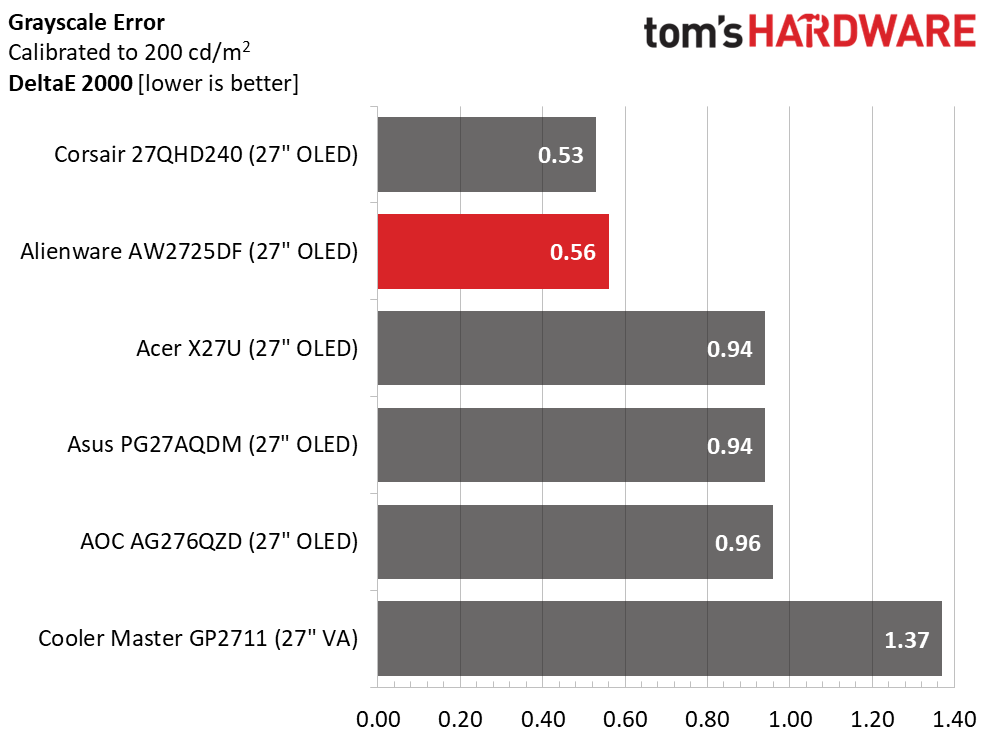
The AW2725DF’s fifth-place finish in the color test is not a negative. All the monitors here perform at the pro level. At this point in time, you won’t find a bad OLED monitor. They have proven to be color-accurate in my experience so far.
The AW2725DF excels in the gamut volume test, covering over 110% of DCI-P3. I’ve only tested one other OLED with as much color, the 49-inch Asus PG49WCD. Though the other screens come close to 100% and are extremely colorful, the Alienware is just a bit more so. Since it equals or exceeds the rest in other test criteria, the large color gamut is a good reason to choose it over others.
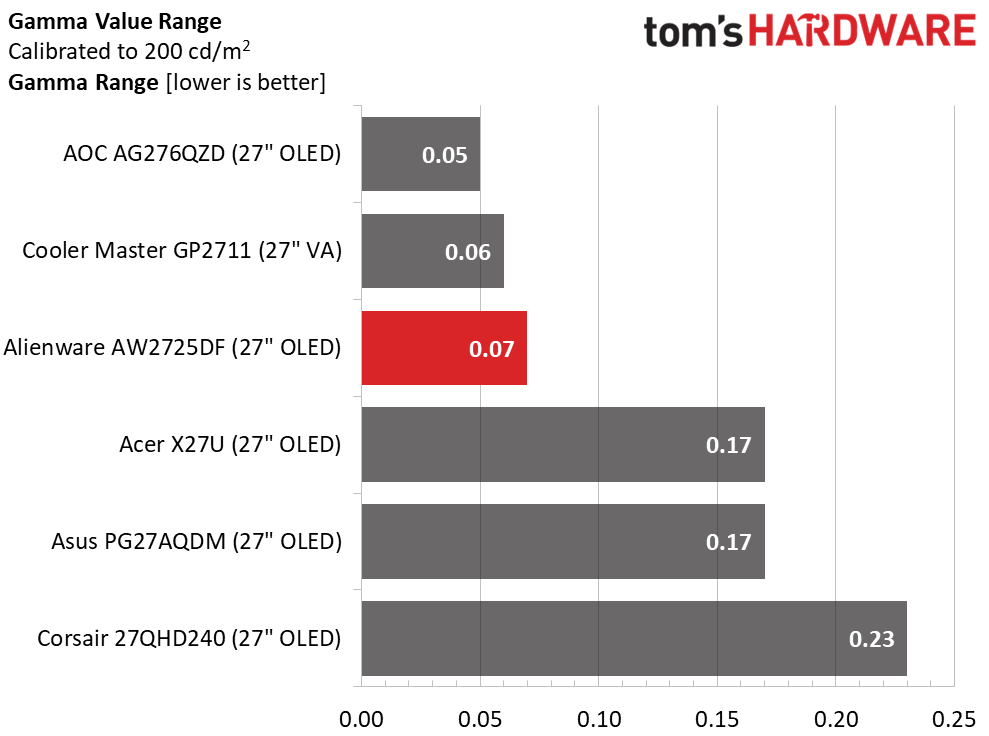
Test Takeaway:The AW2725DF delivers visually perfect color out of the box and has the largest gamut volume of any 27-inch QHD OLED I’ve tested. It meets professional standards for DCI-P3 and sRGB and can be enjoyed without calibration. These reference level results contribute to a stunning image.
Current page:Grayscale, Gamma and Color
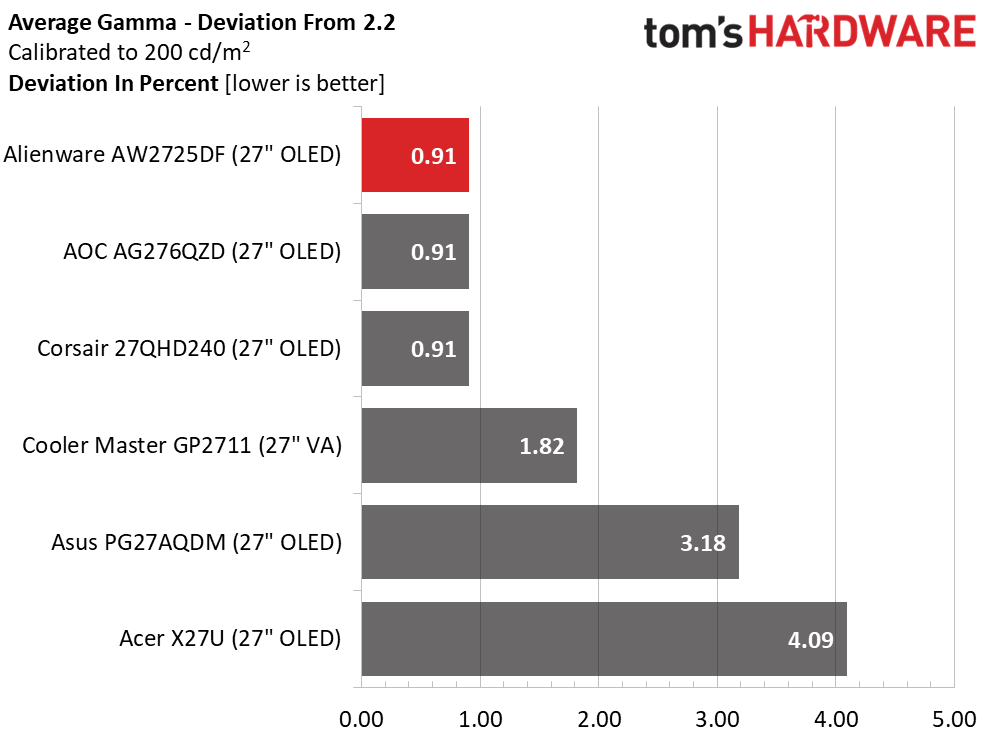
Christian Eberle is a Contributing Editor for Tom’s Hardware US. He’s a veteran reviewer of A/V equipment, specializing in monitors. Christian began his obsession with tech when he built his first PC in 1991, a 286 running DOS 3.0 at a blazing 12MHz. In 2006, he undertook training from the Imaging Science Foundation in video calibration and testing and thus started a passion for precise imaging that persists to this day. He is also a professional musician with a degree from the New England Conservatory as a classical bassoonist which he used to good effect as a performer with the West Point Army Band from 1987 to 2013. He enjoys watching movies and listening to high-end audio in his custom-built home theater and can be seen riding trails near his home on a race-ready ICE VTX recumbent trike. Christian enjoys the endless summer in Florida where he lives with his wife and Chihuahua and plays with orchestras around the state.
